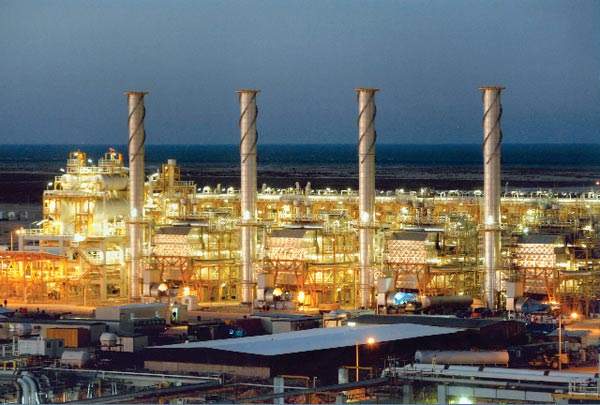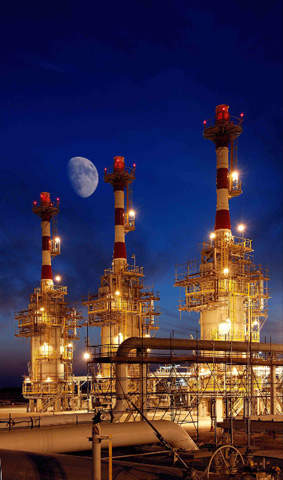The Dolphin gas project is located in the Khuff Zone of the Qatari North Field, about 80km offshore Qatar. The field is one of the world's largest, with an estimated 900Tcf of recoverable reserves, and the project has resulted in the first natural gas network in the Gulf Cooperation Council area.
The project’s operator is Dolphin Energy Ltd, a development company set up in 1999 and headquartered in Abu Dhabi to implement the project. Dolphin Energy, and therefore the project, is 51% owned by Mubadala Development Company, which itself is owned by the Abu Dhabi Government. The other partners are Total and Occidental Petroleum, each with a 24.5% interest.
The $3.5bn project is expected to produce commercial quantities of natural gas for at least 25 years, for sale to utilities and energy companies in the UAE. The finance was raised through 25 national, Islamic and international financial institutions, as a combination of a conventional lending facility of $2.45bn and Islamic financing of £1bn – the largest Shari’a-compliant oil and gas financing transaction at the time.
Gas exploration at Dolphin
The first appraisal well, NFD 1, spudded in December 2001 in about 15m of water, and was completed at a depth of about 3,350m in April 2002. The second appraisal well, NFD 2, spudded in April 2002 and was completed in June at about 3,150m.
The Dolphin project’s initial development included drilling 24 offshore wells in the Khuff Zone, and building two offshore production platforms and a large onshore gas processing plant in Qatar.
Production began in July 2007 and reached full initial capacity of 2bcf/day in February 2008. There is scope to raise this to 3.2bcf/day. The first cargo of condensate, 500,000 barrels, was exported in August, and the project is now exporting six such cargos a month.
Raw, wet gas is transported from the offshore platforms along two 36in multiphase pipelines to Dolphin’s gas processing plant in Ras Laffan, Qatar, reportedly one of the largest facilities of its kind in the world. The plant strips out the condensate, LPGs, ethane and sulphur by-products for sale internationally, and then exports the processed, sweet gas along a 48in, 364km subsea pipeline to the Taweelah receiving facility in Abu Dhabi, where it is distributed to customers.
Dolphin project contracts
The upstream Front End Engineering Design (Feed) contract was awarded to a partnership of Foster Wheeler of the US and France’s Sofresid. The scope of work included Feed for the offshore production complexes, the two multiphase pipelines to transport the gas to shore, the onshore receiving facilities, separation, gas processing and export gas compression facilities.
Work began in Paris in January 2002 and was completed in May 2003.
In January 2004, the EPC contract for the Ras Laffan plant was awarded to JGC Corporation of Japan, at a value of about $1.6bn, with the EPC for the construction, installation and hook-up of the two offshore production platforms awarded to J Ray McDermott Middle East Inc. At the same time, a purchase order was made for the plant’s six compression trains, driven by 52MW gas turbines supplied by Rolls Royce Energy Systems of the UK.
Construction of Ras Laffan, said to be the largest single-build plant in the world, was completed in 2007.
The key Midstream element is the subsea export pipeline, which was completed in August 2006.
The pipe itself was supplied by Mitsui of Japan. The pipeline was laid by Saipem of Italy, which was awarded the $350m EPC contract in March 2004.
In a separate contract, worth more than $115m, Saipem also laid the twin 36in sea lines that link the wells to Ras Laffan.
The principal downstream task was the construction and upgrade of onshore facilities in the UAE to receive and distribute the natural gas arriving from Qatar. New facilities were built at Taweelah by Technip (Abu Dhabi) and Al Jaber Engineering Services Consortium in 2006-7, in a contract worth more than $62m.





